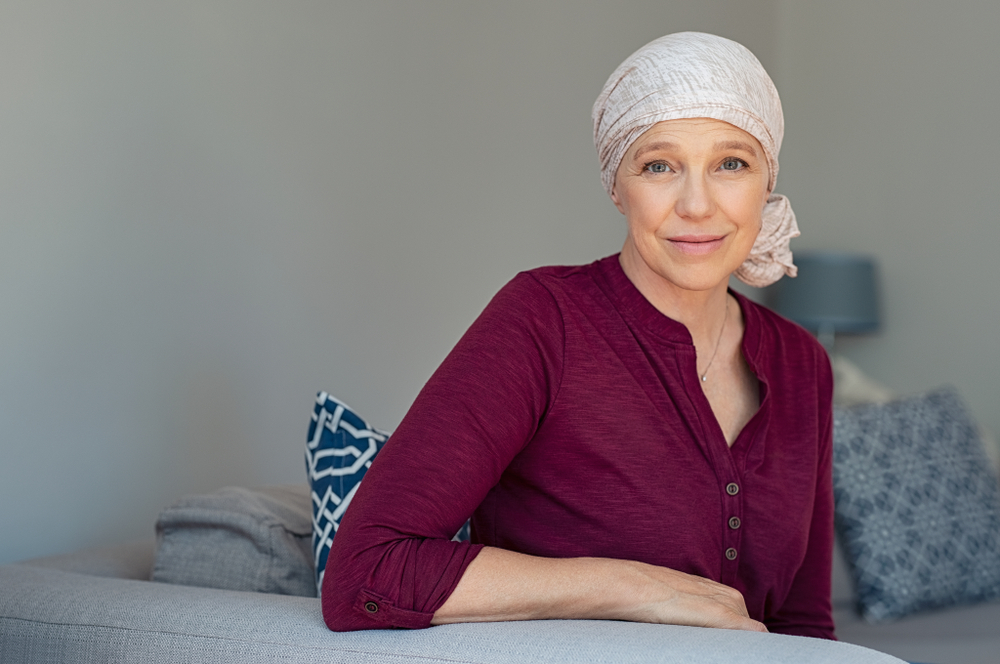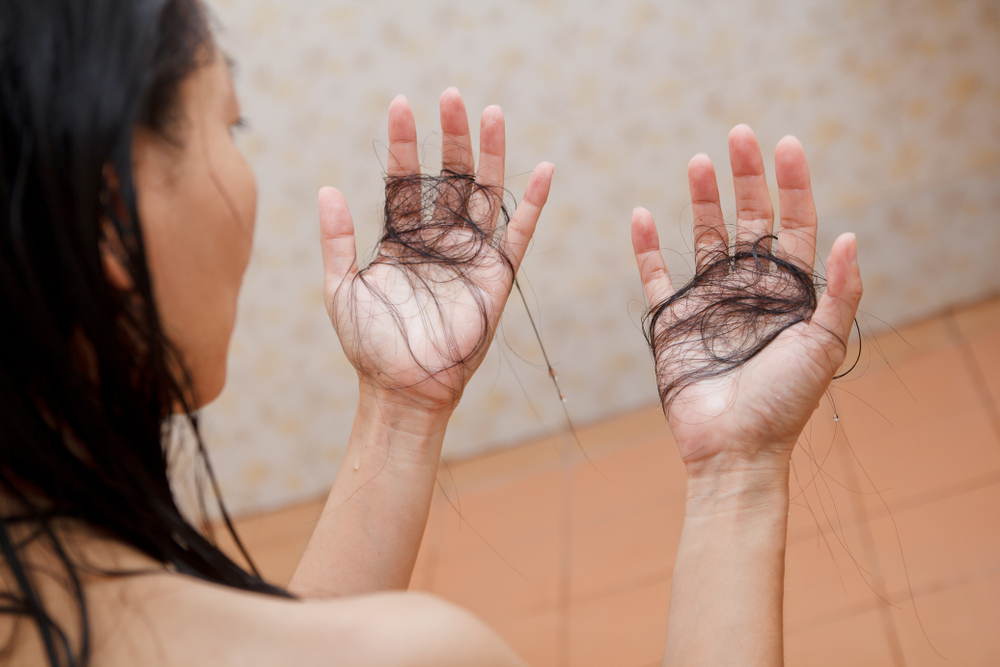Hair Loss in Cancer Patients: Coping Strategies and Support
Table of contents
- Introduction
- Hair loss/Alopecia in Cancer Patients: How Does It Occur?
- How to Care for the Scalp and Hair During and After Cancer Treatment: Coping Strategies and Support
- Managing the Hair After Cancer Treatment
- What are some specific coping strategies for dealing with hair loss during cancer treatment?
Introduction
Hair loss in cancer patients affects more than just their facial appearance and extends to self-esteem. Hence, the need for coping strategies and support tips to go through the process. The importance of hair to appearance and self-esteem is largely underrated unless in the face of imminent loss. It is a feared side effect during cancer treatment in both men and women. Treatments such as chemotherapy, targeted therapy, radiation therapy, or a stem cell (bone marrow) transplant all affect the cells responsible for hair growth leading to alopecia.
The type of hair loss experienced varies in each patient. While some have a total loss, some have hair loss in patches, thinning out of the hair, hair breakage, etc. Depending on the pattern of alopecia, certain palliative measures may be instituted.
Hair loss/Alopecia in Cancer Patients: How Does It Occur?

Chemotherapeutic drugs are medications that target rapidly growing cells. These however do not discriminate and thus may also damage other normal rapidly growing body cells. This hair loss on different parts of the body is drug, dose, and duration dependent and is fortunately temporary.
Unlike chemotherapy, radiation therapy causes alopecia in the region where it is used. Very high doses of radiation therapy may however lead to a permanent loss of hair in the area.
Targeted therapy for cancer treatment causes incomplete hair loss. They may cause hair to be thinner, curlier, or drier than usual.
As with targeted therapy, hormonal therapy does not lead to complete alopecia but rather causes hair thinning. This may happen several months to years following treatment.
Following the completion of cancer treatment, hair growth begins about 2-4 months. It is worthy of note that hair color and texture may be different for a while. In severe cases, there is a permanent change in hair color, texture, and volume.
How to Care for the Scalp and Hair During and After Cancer Treatment: Coping Strategies and Support

Despite the lack of effective treatments to prevent alopecia while undergoing cancer treatment, different changes and adjustments in lifestyle may help in reducing the effects both during and after treatment. Some of these adjustments are:
Scalp hypothermia
This involves the use of cold therapies such as scalp cooling caps during chemotherapy infusions. The aim of this is to slow blood flow to the scalp thus reducing the effects of the drug on the hair. The downside to this is that there is a possibility of the cancer cells reoccurring in the scalp since a lower dose of the chemotherapy gets to that area. The uncomfortable cold and headaches that follow scalp hypothermia are reported by patients.
Minoxidil
Applying minoxidil a drug approved for use in alopecia may help in increasing the rate of hair growth but has little to no effect in preventing hair loss during treatment. Further research is required to determine if hair growth is faster with the use of minoxidil immediately after treatment.
Cutting the hair:
Most patients are advised to cut their hair before treatment. This makes it easier to adjust and saves the patient from the trauma of losing hair during treatment. Depending on the hair length, patients can transition gradually from long hair to shorter one. Short hair may help create an illusion of more volume during treatment.
Plan for a headcover
The use of wigs and headpieces are parts of plans that cancer patients make before treatment commences. This is because most may be able to get wigs with the same texture and color as their original hair and also get used to using this to boost their self-esteem. Patients may also enlist the help of agencies that provide wigs and headpieces for cancer patients at discounted rates or even free.
Protect the scalp from the sun
For patients who decide to wear their hair as is during treatments, adequate care of the hair and scalp is necessary. It is important to wear sunscreen for bald and thin hair and uses mild shampoos and other hair products for the remaining hair. This helps to reduce the damage to the hair from external factors other than cancer treatment.
Use mild shampoos and conditioners
Look for items that are made with gentle ingredients and are specially formulated for the skin that is sensitive. Avoid using hot water and abrasive soaps because they can aggravate the scalp even more.
Moisturize your scalp
Apply a moisturizer to your scalp to maintain its moisture and ward off dryness and itching. Seek out products with organic components like aloe vera, chamomile, and lavender.
Avoid heat styling
Avoid using heat styling appliances on your hair because they might harm your scalp and hair, such as blow dryers, curling irons, and straighteners. As much as you can, try to stay away from utilizing them.
Be gentle when brushing or combing your hair
To prevent pulling or tugging on your hair, use a soft-bristled brush or a comb with wide teeth. To prevent breaking or harming your hair, start at the ends and work your way up. In addition to using a head cover, this is one of the natural ways of preventing hair loss during chemotherapy.
Therapy
Cancer patients need to go for therapy sessions with a professional, family member, or friend. This will go a long way in improving self-esteem, listening to words of encouragement for cancer patients losing hair will also help. It can be emotionally difficult to cope with hair loss brought on by cancer therapy. You can ask a therapist for help, sign up for a support group, or engage in self-care practices like exercise or meditation. Remember that there are resources out there to support you during this trying time.
Managing the Hair After Cancer Treatment
Care should be taken after treatment in the use of products for hair growth. It is advisable to confer with your health professional about the possible effects of supplements and hair growth products. This is because certain drugs may have adverse effects when combined with cancer treatment or may affect the treatment altogether.
Certain vitamins and minerals may be prescribed to aid in hair growth. Hair often grows back in 2 to 3 months after chemotherapy treatment has ended. For radiation treatment, it may last up to 6 months for hair growth to occur depending on the dose and duration. The individual needs to be patient with the process.
It is also possible for the hair texture and color to be different. in such cases, the patient is advised against the use of chemicals and dyes that will affect hair texture and color. this is because most of the chemicals can lead to damage to the already sensitive hair and scalp.
In severe cases where permanent damage or hair growth is excessively slow, patients may seek professional advice on hair transplant. This may not be required as most alopecia in cancer treatments are temporary. The patient must improve their lifestyle and diets to help aid in the recovery process.
What are some specific coping strategies for dealing with hair loss during cancer treatment?
Managing hair loss while receiving cancer treatment can be challenging and distressing. However, numerous tactics might support people in managing this difficulty. To retain a sense of normalcy and confidence, wearing wigs or other head coverings, such as hats or scarves, is a typical strategy. However, some individuals decide to embrace their baldness and forgo any covering. Finding the strategy that suits you and makes you feel comfortable is crucial in the end. A good strategy to deal with the emotional effects of this event and to connect with others who might be traveling a similar path is to seek support from a therapist or support group.
The information provided in this blog is for educational purposes only and should not be considered as medical advice. It is not intended to replace professional medical consultation, diagnosis, or treatment. Always consult with a qualified healthcare provider before making any decisions regarding your health. Read more

